New York Office Turns On Contemporary Vibe
Created by interior designer Montroy Andersen DeMarco (MADGI), New York (madgi.com), an affiliate of Montroy DeMarco Architecture (montroydemarco.com), the project has received LEED Platinum certification, the highest level of sustainability awarded by the U.S. Green Buildings Council, Washington (usgbc.org).
Formed in 1971, the World Economic Forum broadened its mission in 1987 to providing a platform for resolving international conflicts through initiatives and meetings held around the world. The organization is best known for its annual multi-day meeting in Davos, Switzerland, which brings together 2,500 business leaders, politicians, economists, and journalists from nearly 100 countries to discuss the most pressing issues facing the world. In addition to its Geneva headquarters and New York City facility, the Forum has offices in San Francisco, Beijing, and Tokyo. It is committed to sustainable development and included a high level of energy efficiency and green practices in its design requirements for the New York City headquarters.
“World Economic Forum’s new offices occupy the entire 10th and 11th floors of 350 Madison Avenue, which is between 44th and 45th Streets. Our team designed the space to accommodate both the organization’s 150 New York-based employees as well as facilities that hold meetings for up to 160 participants,” said MADGI principal, Steven Andersen. “The conference rooms were designed with the ultimate in flexibility in mind, as the Forum wanted to be able to conduct both training-style presentations and large plenary-style meetings,” he continued.
Eleventh Floor
“The team wanted to create a high-end, more sophisticated reception area on the 11th floor, where guests, speakers, and leaders will be greeted. This area features back-painted white glass, wall cladding, wood planks, millwork, and high-end European furniture,” said MADGI designer Mariana Panova.
In the 1,300-sq.-ft. reception area, the design team redesigned and highlighted an existing staircase and created a seating area. The light and warm color scheme features a palette of light beige accented with the Forum’s dark blue and light blue glass details. The Forum logo is installed behind the reception desk, over a wood-plank feature wall, which is also installed on the ceiling above. The wood is a Forest Stewardship Council-certified (Minneapolis, us.fsc.org/en-us) white oak by USF Contract, Dalton, GA (usfcontract.com), with an oiled finish. The custom-designed reception desk features a Bendheim glass, New York (bendheim.com), front accented with LED-edge lighting.
The reception and seating area also has a Bendheim glass wall cladding with shelves for the Forum’s publications. The glass niche shelves are built of champagne-colored mirrored glass, adding to the elegant residential feel of this section of the floor. The seating area’s ceiling design was important, as the designers wanted to create an inviting, soft glow in the space by using indirect LED-cove fixtures. Accent-type European lighting fixtures, including iGuzzini Laser Blade, Montreal (iguzzini.com), recessed lighting and wall washers, and Visual Lighting Technologies’, Cedar Park, TX (vltcorp.com), double-cove lighting over the seating area, complement the comfortable look and feel of the space. The furniture is by Poltrona Frau, Tolentino, Italy (poltronafrau.com/en).
This area also features a television built into the glass-clad wall, separating it from the office section. The TV screen is mounted lower than is typical to enhance the residential feel of the space. The floor of the reception space is porcelain tile with a wood texture; the Forum’s facilities executives wanted the look of wood but not the maintenance required for such a high-traffic area. Opposite the reception desk is the staircase, for which MADGI specified Bendheim glass cladding on the entire back wall, from the stair landing to the ceiling. A series of MIO’s, Philadelphia (mioculture.com), 2- x 2-ft. Quad FeltForm 3D acoustical felt tiles were placed in an indirectly lit ceiling cove centered above the stairs. The stairway features an Intense Lighting, Anaheim, CA (intenselighting.com), stainless-steel V-Rail handrail system with embedded LED lighting strips, and a glass guardrail by Q-railing, Tustin, CA (q-railing.com/en-us/).
“The 11th floor is functionally split on two sides of the reception lobby. The building layout allowed us to separate one side of the floor as public and meeting spaces, and the other as an administrative work area,” explained MADGI project manager, Elizabeth Zagarello, Assoc. AIA.
The seven conference rooms all have audio-visual capabilities and video-conferencing equipment, and range from 150 to 500 sq. ft. Some of the conference spaces combine in pairs to create large training rooms for as many as 75 people. The 950-sq.-ft. plenary space can sit 160 participants and doubles as a café and informal meeting area. A large television wall in the plenary room becomes a digital presentation and teleconference wall when this room is in plenary mode.
The flexible furniture of stacking chairs in white and blue and the Nevins/Pax, Cat Spring, TX (nevins.co), height-adjustable tables in the plenary room support its multi-purpose function as a flexible social, lunch, and casual meeting area in addition to being the setting of formal meetings and conferences. The public and meeting areas feature Modernfold, Greenfield, IN (modernfold.com), Acousti-Seal Encore automated movable acoustical partitions wrapped in acoustical fabric on both sides. This allows flexibility in terms of the configuration of the meeting space, as well as acoustical separation.
Conference rooms feature Halcon Skill, Stewartville, MN (halconfurniture.com), tables with ample legroom and ergonomic Haworth Zody, Holland, MI (haworth.com), chairs as well as Prismatique, Toronto (prismatique.com), credenzas with incorporated garbage storage for inconspicuous disposal of food and drink containers during meetings. The smaller of two pantries is also situated on the 11th floor in close proximity to the plenary space. It serves as a pantry/café for day-to-day goings-on but can be used as a catering/warm-up station for large gatherings.
“In the plenary room, the acoustical properties were improved by the use of woven vinyl tile flooring by Fitnice, Barcelona (fitnice.com), perforated millwork by Fantoni, Osoppo, Italy (fantoni.it/en), on the main ceiling and columns, and Pyrok, Mamaroneck, NY (pyrok.com), acoustical plaster on the perimeter ceiling,” explained Panova. “The TV display wall features three-dimensional, recycled polyester felt Zintra acoustical panels by MDC Wallcovering, Glendale Heights, IL (mdcwall.com), in the Forum’s signature dark blue. Double-glazed partitions by Sky Walls, New York (skywalls.com), provide acoustical privacy between the plenary and adjacent conference rooms,” she continued.
A large open-plan work area on the southern side of the floor has 29 workstations with adjustable-height desks by Haworth, private offices for the finance and human resources departments, smaller conference rooms and phone booths, a multimedia studio that produces the organization’s promotional videos, and a wellness room.
While the reception and public spaces are more high-end, the office spaces are more functional, with regular carpet tile, functional furniture, and painted gypsum-board walls. The human resources and finance departments had specific privacy requirements. For example, HR operates in a separate two-person office and employs a small conference room it shares with the finance department. Finance, on the other hand, has its own small six-person office.
Initially, the client wanted a benching application in the office sections; as the planning work progressed, the client expanded this concept to benching with storage underneath height-adjustable tables. All of the public-area furniture is foldable and movable to enable easy transformation of those areas. MADGI maximized natural light on both floors, taking advantage of the windows on all sides of the floor and keeping the height of the furniture low. All conference room windows have motorized blackout shades for use during presentations.
MADGI specified LED lighting throughout the floor. Specifically, Studio Italia Design, Venice, Italy (studioitaliadesign.com), supplied the accents in the reception area, while the general lighting fixtures are from Finelite, Union City, CA (finelite.com).
Tenth Floor
After descending the stairs, one finds an open, 425-sq.-ft. employee entrance foyer and team meeting area with four privacy seating pods designed as booths with high backs. Two three-person booths and a table form a six-person meeting area, and two single-person pods serve two-person gatherings. The rest of the floor plan comprises three executive offices; 109 standard adjustable-height workstations and four larger, U-shaped managers’ workstations in the open-plan section; a large employee pantry with seating for 30; one executive conference room; two small four-person conference rooms; four small phone rooms; and an IT room. The phone-room walls feature acoustical felt panels. These were painted in various accent colors to bring more life and “pop” to the spaces.
For this floor, MADGI specified Armstrong, Lancaster, PA (armstrongceilings.com), acoustical-tile ceilings throughout, contemporary recessed continuous linear LED lights over the workstations, and carpet tile as used on the 11th floor. The pantry’s floor is luxury vinyl tile (LVT). Both pantries feature high-end refrigerators, partial Fantoni ceilings, and blue Chevron-tile backsplashes that bring in more of the organization’s accent color, to contrast with the white color scheme of walls, furniture, and floor tiles.
LEED Platinum Certification
Achieving LEED Platinum certification can be an arduous task. It required an exceedingly collaborative effort between each member of the design and construction team (including subcontractors), the owners, and the owner’s representative. CodeGreen, New York (codegreensolutions.com), was brought in very early on in the project, which set the tone for the seriousness of the effort to attempt LEED Platinum. The certification process was overseen by CodeGreen’s project manager, Jorge Lopez, LEED AP BD+C, WELL AP, Fitwel Ambassador. “We attempted to get 82 points. At the end of the day, that’s what we were awarded. Not a single item was denied. It was extremely gratifying that we were able to deliver a Platinum space for the Forum,” said Lopez. Overall, this speaks to the quality of the LEED-related design effort, construction procedures, documentation management, and fidelity to the process of the entire team.
Some of the impressive sustainable achievements the team members were able to produce involved the installation of low-flow water fixtures. Pint-flush urinals (0.125 gpf), low-flow WCs (1.28 gpf), and low-flow metered lavatory faucets (0.1 gal./cycle) enabled the team to reduce potable water use by a massive 40% below the LEED baseline. The project was awarded the maximum number of points for Water Efficiency (11).
Meanwhile, the high-efficiency LED lighting fixtures MADGI chose enabled a 45% lighting power reduction, compared to the ASHRAE 90.1-2007 baseline. About 52% of the project’s total lighting load is connected to daylight controls that automatically turn lights off when daylight is available, and a full 92% of the project’s total lighting load is connected to occupancy sensors that automatically turn lights down when spaces are vacant. Over 90% of the newly installed equipment and appliances were Energy Star-labeled, meaning that they were independently certified to save energy without sacrificing features or functionality. As a result, the project was awarded 27 points (out of 37) for Energy and Atmosphere, in part due to the lighting.
All in all, the Energy and Atmosphere categories were the most difficult points to achieve, as most of the Forum’s space is connected to the base building’s HVAC and mechanical systems, meaning the team had limited control over how the systems functioned. (The so-called “IDF Room” has dedicated HVAC systems, with which the team was able to work. The rest of the spaces are tied to the building.) However, RFR Holding, the landlord, was sympathetic and helped in the processes whenever possible.
Also, the project was awarded points for increased ventilation, as they were able to significantly improve the indoor environmental quality of the space by increasing the outdoor-air ventilation rates to 30% above the minimum outdoor air required by ASHRAE 62.1-2007. This was done by implementing construction air-quality management plans and practices, as well as by specifying and installing low-emitting materials. MADGI stipulated the use of low-e adhesives, sealants, paints, coatings, flooring, composite wood, and furniture. In fact, CodeGreen performed indoor air-quality testing after construction was complete, to demonstrate that the level of air-quality parameters were within accepted LEED limits. These included levels of formaldehyde, volatile organic compounds (VOCs), airborne particulate matter (PM10), and carbon monoxide (CO). These items enabled the project to win 11 points for Indoor Environmental Quality (out of 17). Spaces that provide good indoor-air quality protect the health and comfort of occupants, enhance productivity, and decrease absenteeism.
The team ensured that more than 80% of all demolition and construction waste was recycled, diverting it from landfills. Regarding new materials, more than 30% of it was made of recycled content, including construction materials, finishes and furnishings, and furniture. Furthermore, more than 82% (by cost) of all new wood-based products installed were certified by the Forest Stewardship Council (FSC), which ensured that the products came from responsibly managed forests in a manner that was environmentally sound, socially beneficial, and economically prosperous. These items helped the project win six points (out of 14) for Materials and Resources.
MADGI also specified the installation of recycling stations throughout both floors so that the employees have ample opportunities to collect plastic, glass, metals, paper, organics (compost), small electronics, and batteries for recycling.
The project garnered 19 LEED points (out of a possible 21) for Sustainable Sites, including the maximum amount of points for Development Density and Community Connectivity due to the location of the building and its proximity to Grand Central Station and multiple bus and subway stops. The project also received points in this category for Alternative Transportation, as team members were able to access the basement to create a bicycle station and changing room for the Forum’s employees. The project was also awarded the maximum number of points for Innovation in Design (6), and Regional Priority Credits (2).
Challenges
The 19-week time frame required the team to be creative in terms of logistics and scheduling. Work was performed on both floors simultaneously, and work producing the most noise—such as demolition, core drilling, and steel installation—was conducted on evenings and weekends. In addition, the team practiced advanced planning for long-lead items, particularly those used in the public assembly space and the reception. Products imported from other countries, such as the Fantoni ceiling system, had to be ordered immediately upon the project’s start.
According to J.T. Magen’s, New York (jtmagen.com), lead superintendent, Gary McAllister, “We made an extra effort to coordinate the ceilings with the existing HVAC system and related ductwork. The entire construction team worked closely with the mechanical trades, to coordinate access to the system and, of course, to avoid any kind of conflict.” The same painstaking coordination was employed for the installation of the lighting systems. All of this was taking place while the Fantoni ceiling was being manufactured in Italy, as well as after it was delivered to 350 Madison.
In addition, the team was installing other types of ceiling materials around where the Fantoni product was to be placed, requiring even more careful coordination. For example, the wet-applied plaster ceiling area was installed carefully, as it could easily stain the Fantoni product.
The installation of new stair elements proved to be another challenge, due in part to the existing condition of the stair’s structure. The system had to be modified in the field. It was decided that the best way to proceed was to block off the stairs during renovation. They were completed shortly before the project’s opening. The Bendheim glass elements were installed at the end of the work in each section, in order to protect the glass from damage.
“To accomplish its goals, the World Economic Forum engages business, political, and academic leaders as well as civil society through meetings and initiatives to shape global, regional, and industry agendas,” said Stephan Ruiz, the Forum’s head of finance and operations. “Our new New York City office will support our mission and provide a comfortable work environment for our employees. It also reflects our organization’s strong commitment to sustainable development and operations.”
Project Team
General Contractor: J.T. Magen & Co. Inc., New York (jtmagen.com)
Project manager: Craven Corp., New York (cravencorporation.com)
LEED consultant: CodeGreen Solutions, New York (codegreensolutions.com)
MEP engineer: CFS Engineering, New York (cfseng.com)
Source: Commercial Architecture Magazine
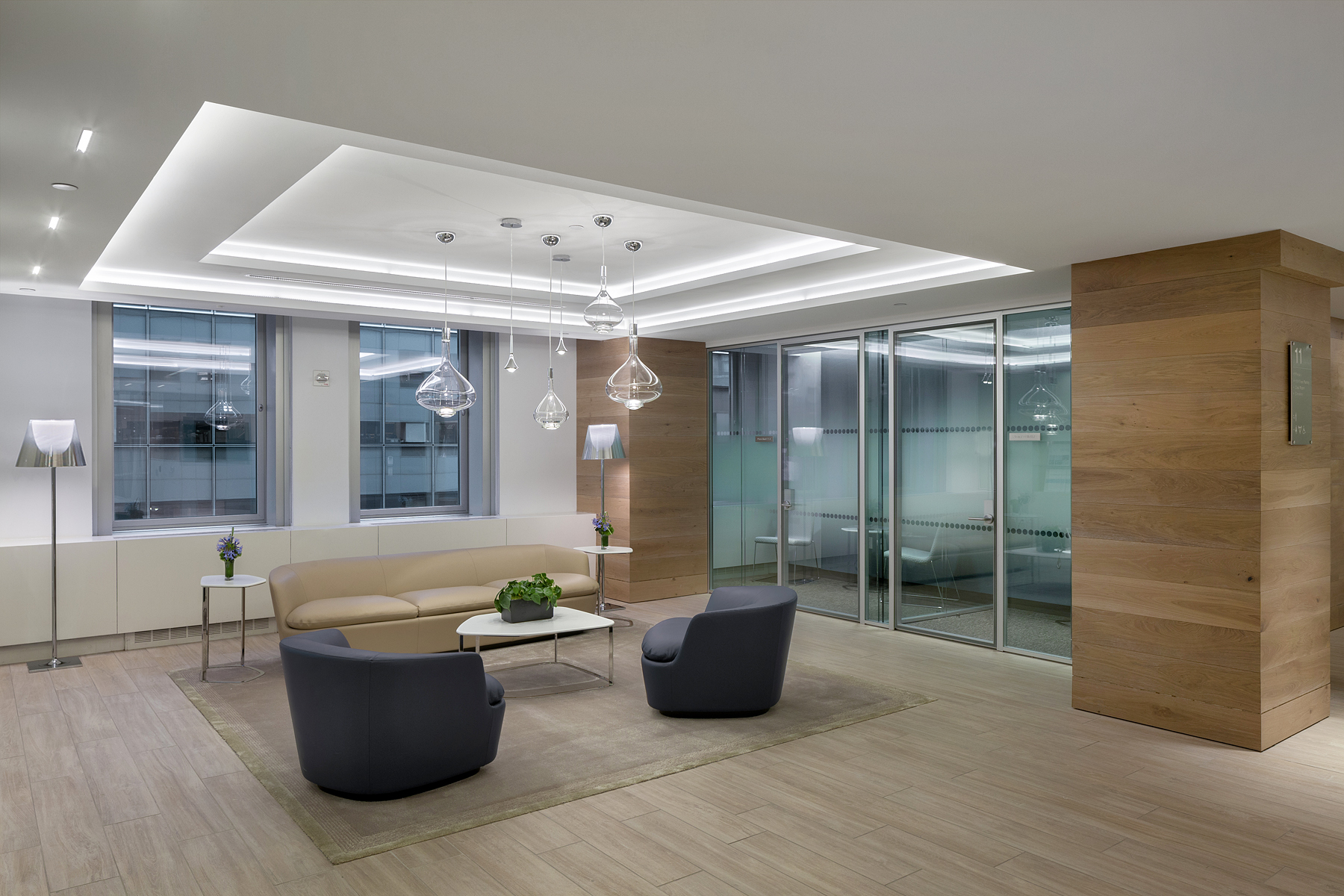
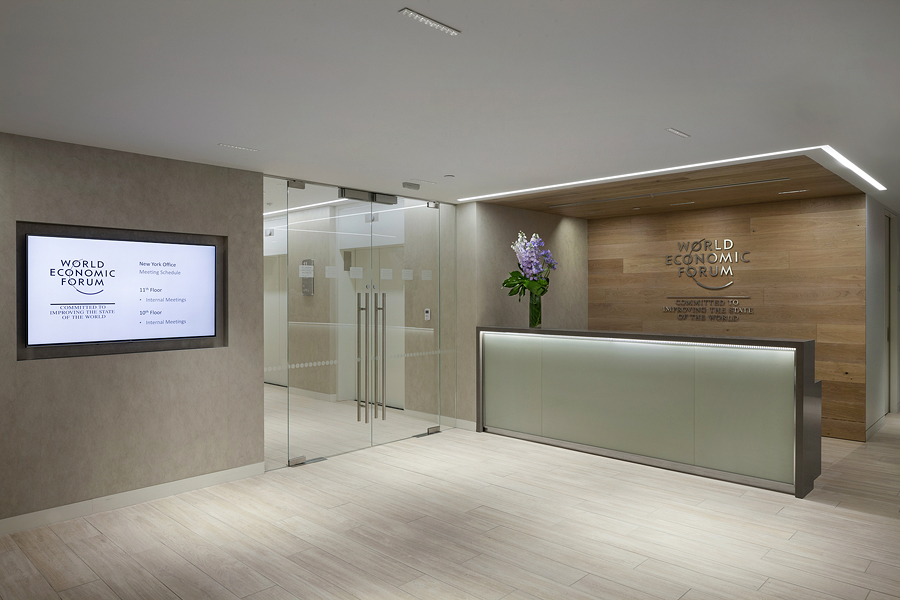
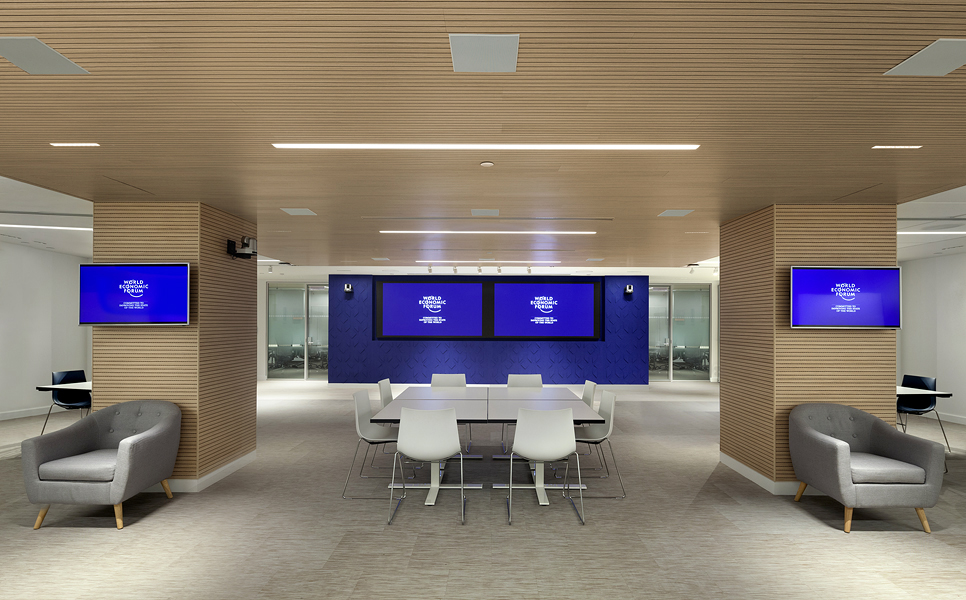

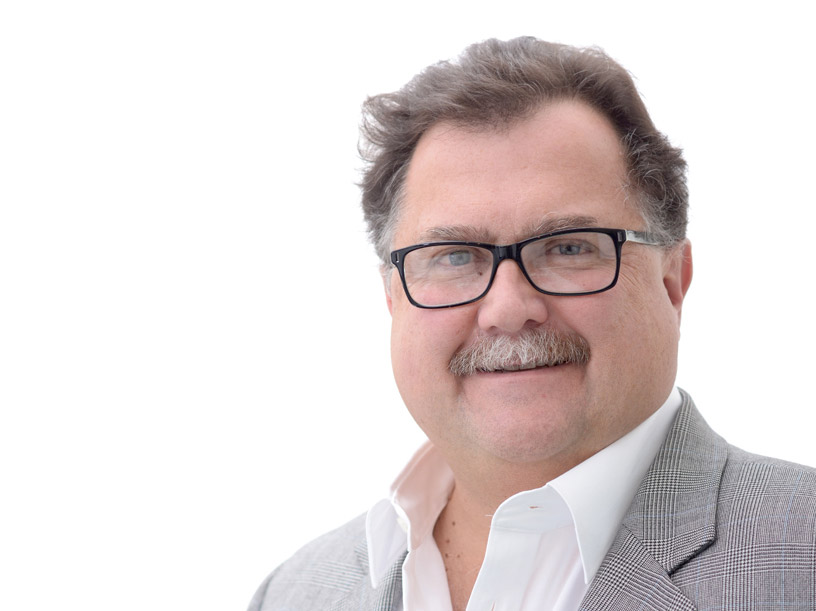
Commercial to Residential Property Conversion in New York City: Financial and Design Feasibility Overview
Commercial tenants currently only use approximately 50% of their offices. Companies are either shrinking their space or not renewing their leases. To make matters worse, prior to the pandemic, many owners of older, mortgage-free office buildings took out loans...
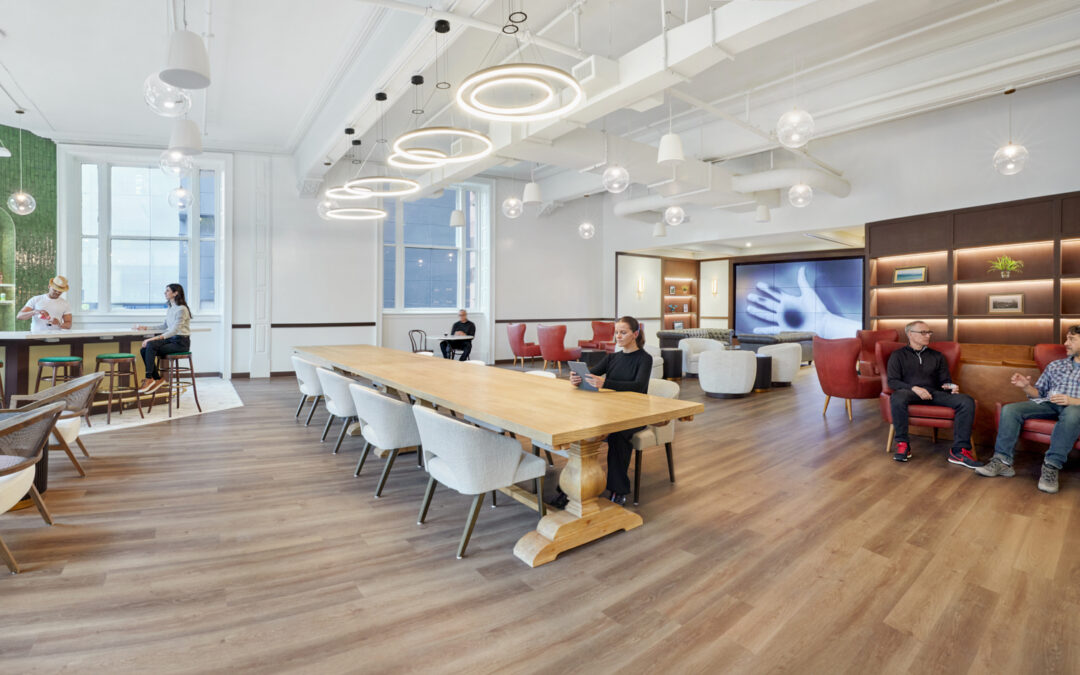
MDA is One of the Nation’s Largest Workplace Interior Architecture Firms
Montroy DeMarco Architecture LLP is one of the Nation's Largest Workplace Interior and Interior Fitout Architecture and Architecture Engineering (AE) Firms! Check out Building Design+Construction Magazine's Annual 2024 Giants 400 Report....
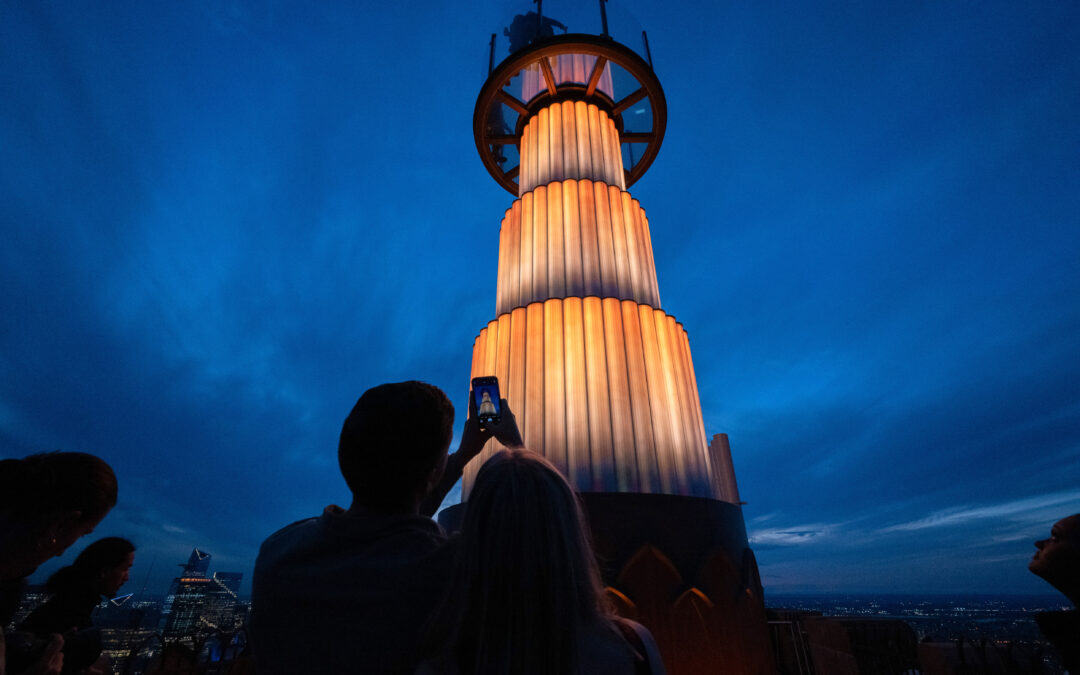
Top of the Rock Opens 900 Ft. High Skylift Attraction
Skylift at Top of the Rock, a new attraction atop 30 Rock, elevates visitors nearly 900 feet in the air above street level for a spectacular, entirely unobstructed, 360-degree view of New York City. The design team for the Skylift included owner Tishman Speyer...
